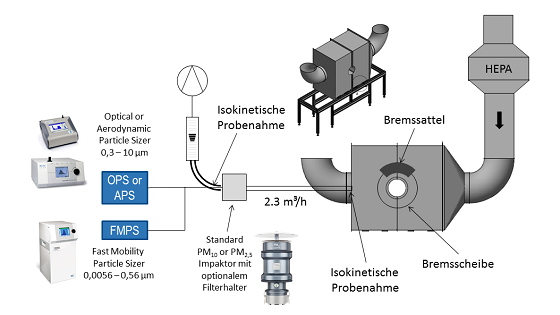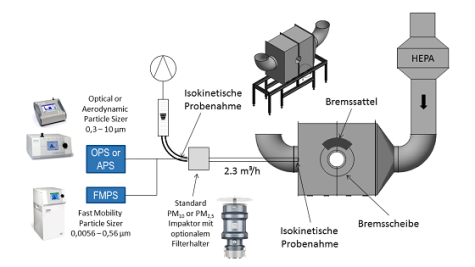

Identification of Actuating Variables

In order to methodically develop measures for the reduction of particle emission, the emission behavior of disk brakes, which is not fully understood yet, is researched. Based on emission measurement results and tribological phenomena which are known from literature hypotheses about possible cause-effect relationships are postulated, which are validated through experiments with an inertia dynamometer. The findings of these experiments are the foundation to build a model that can quantitatively predict emission behavior.
Low-emission Braking Strategies
By implementing this model into a vehicle simulation, the potential of low-emission braking strategies is estimated, among others for a deployment in Advanced Driver Assistance Systems (ADAS). Beside the development of low-emission braking strategies, varying different brake components in order to reduce emissions is also a focus of this investigation.
This topic is researched at FZD in the course of a research assignment in cooperation with Daimler AG.



